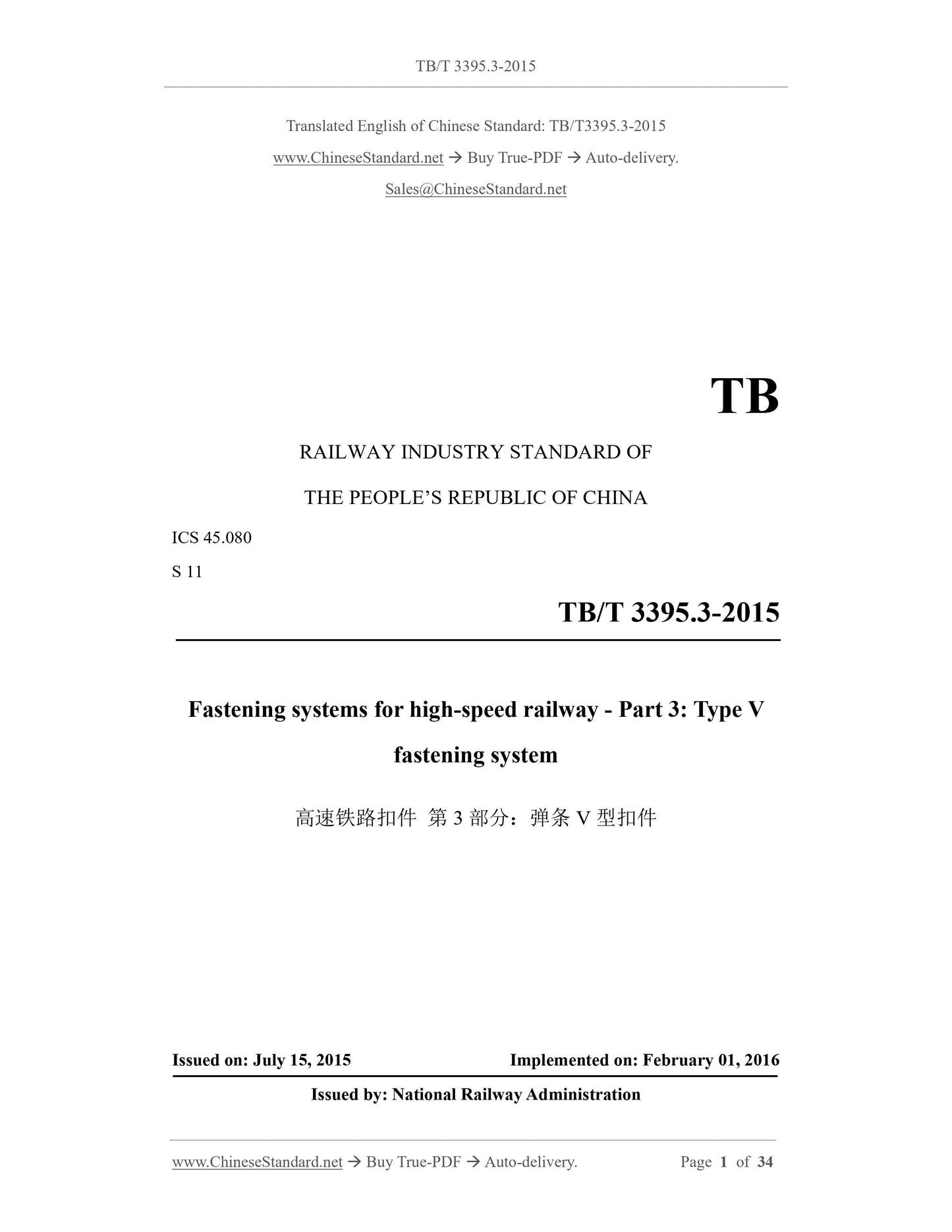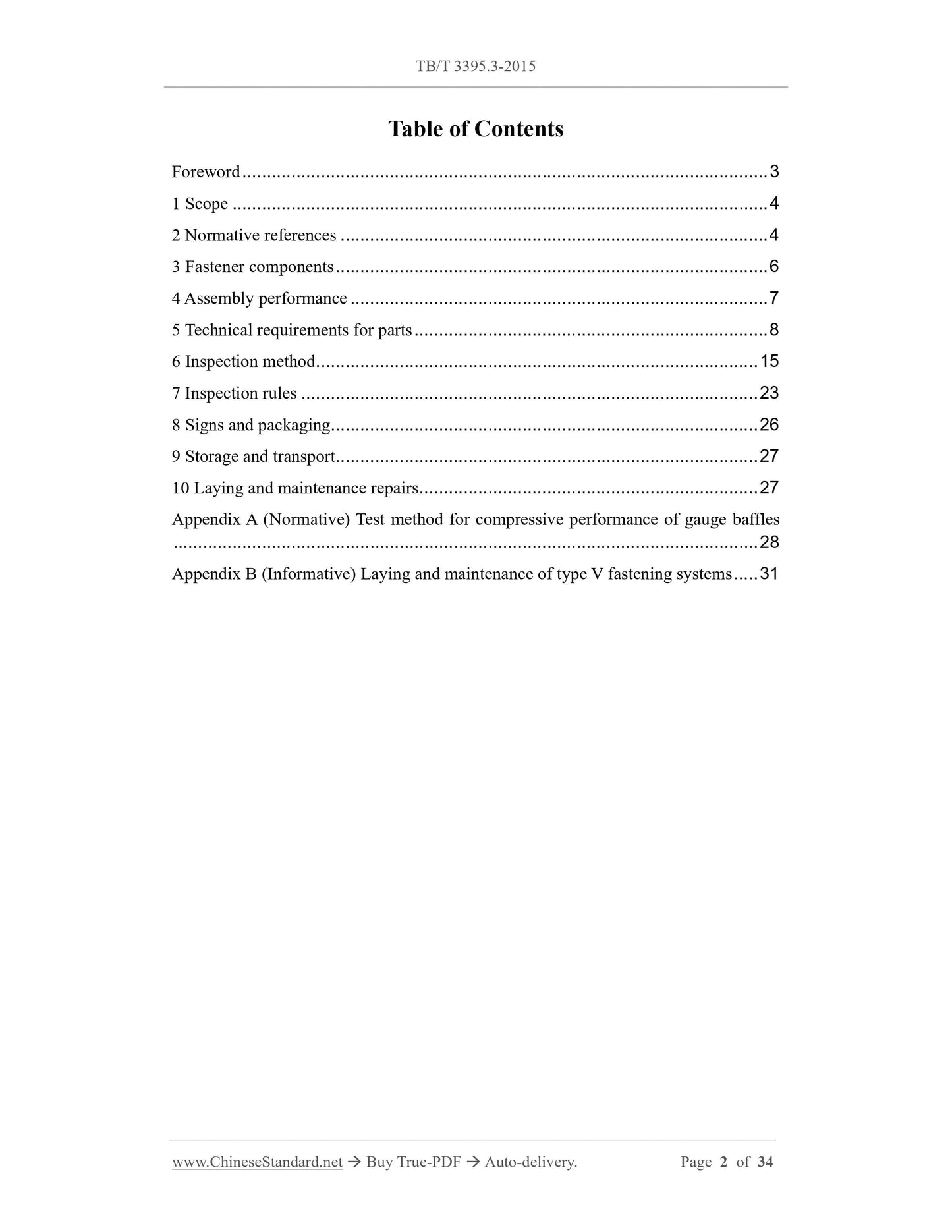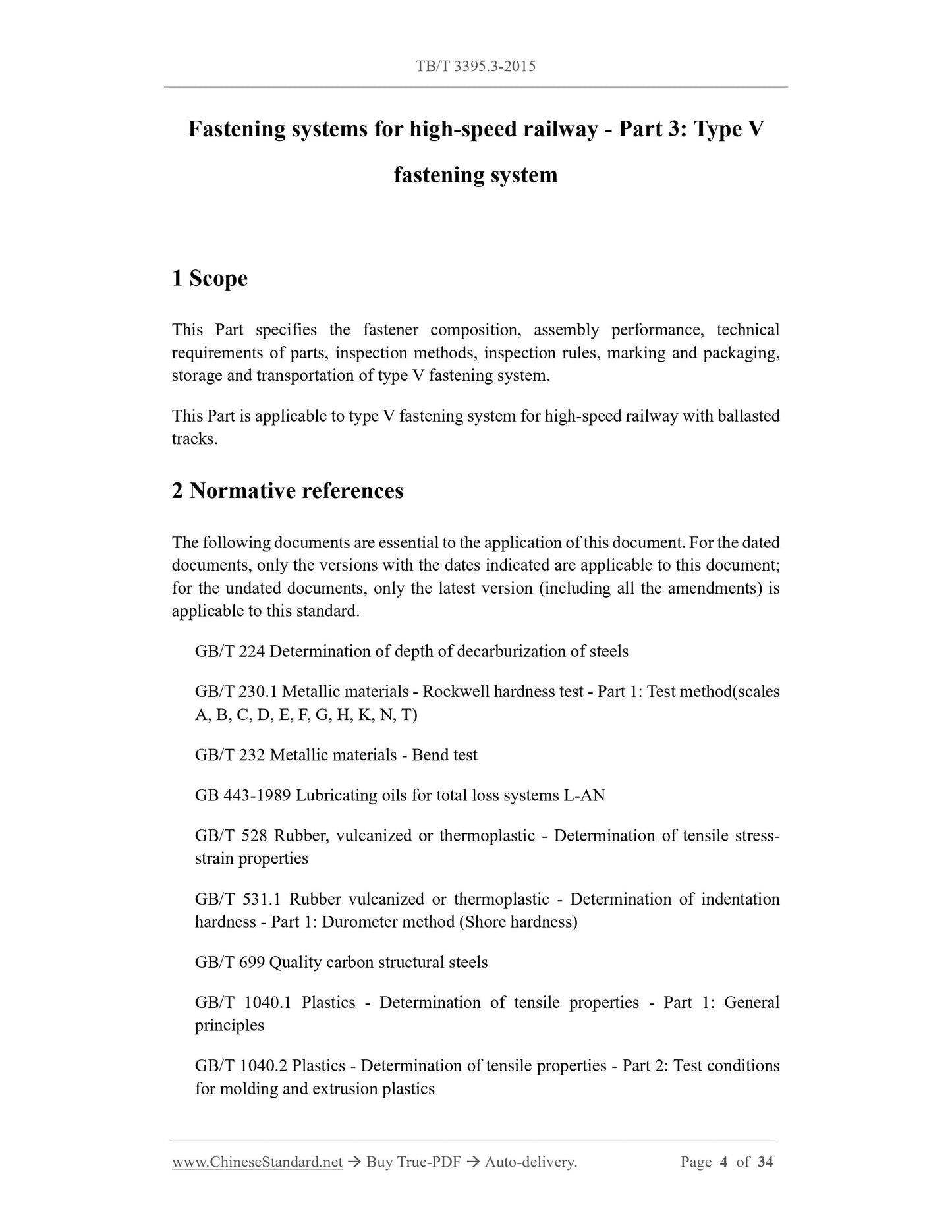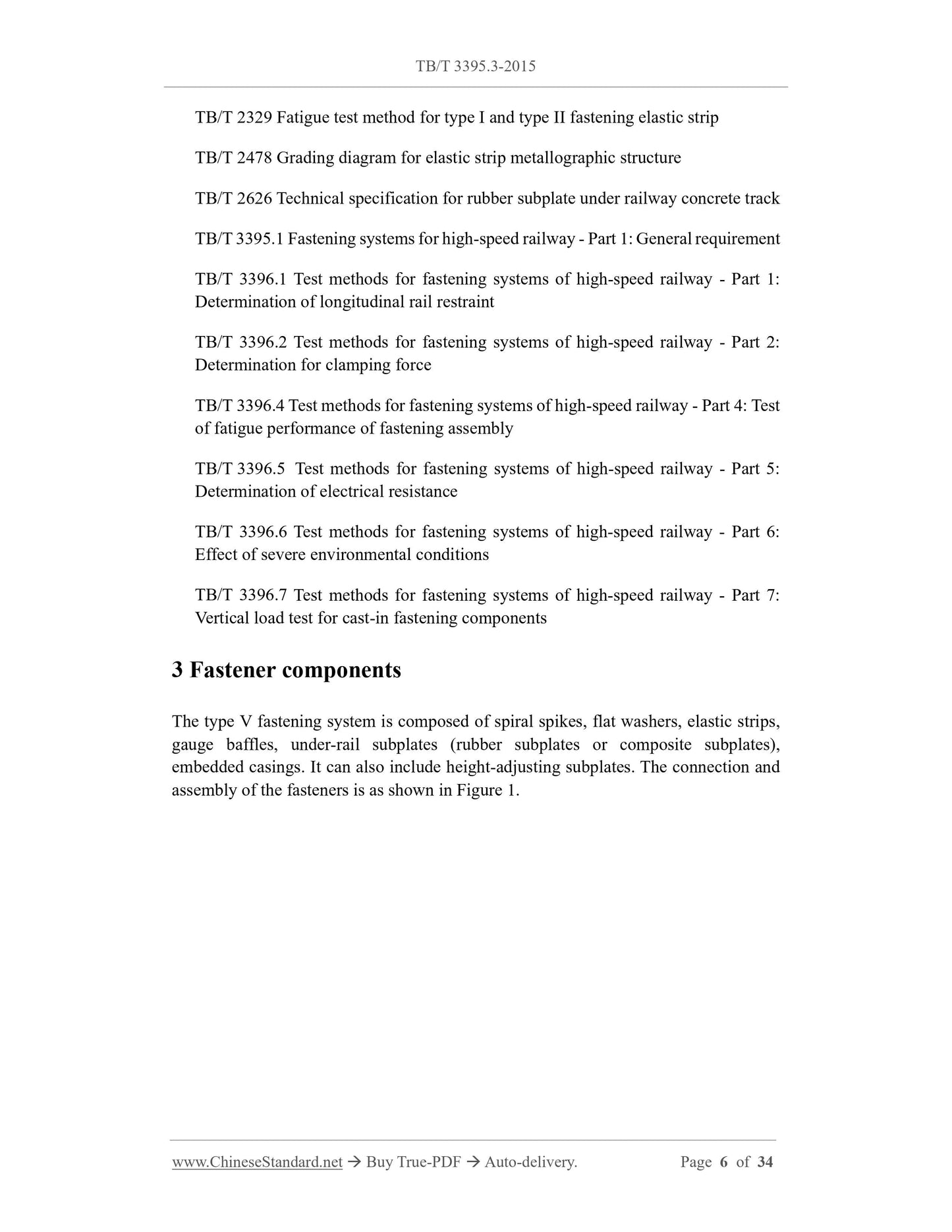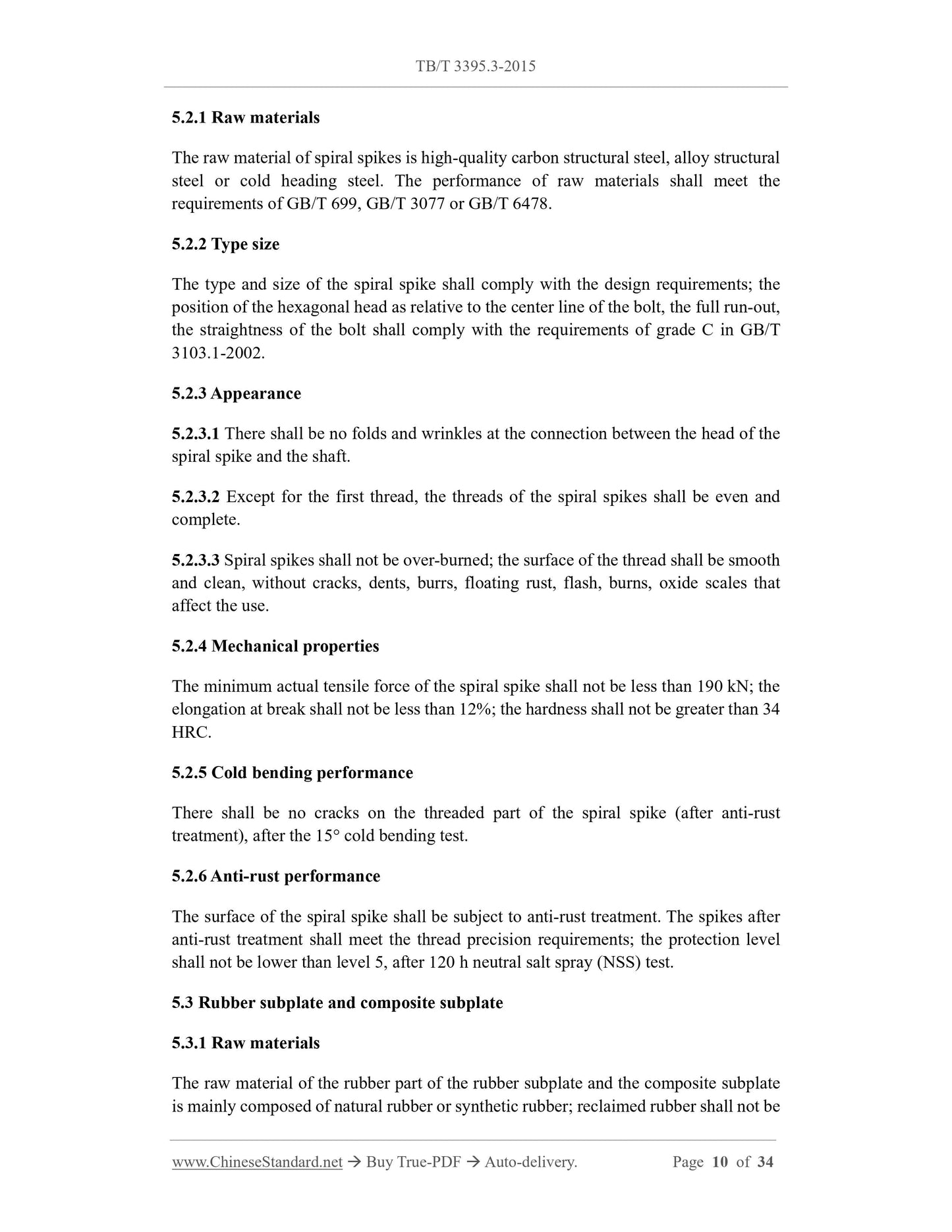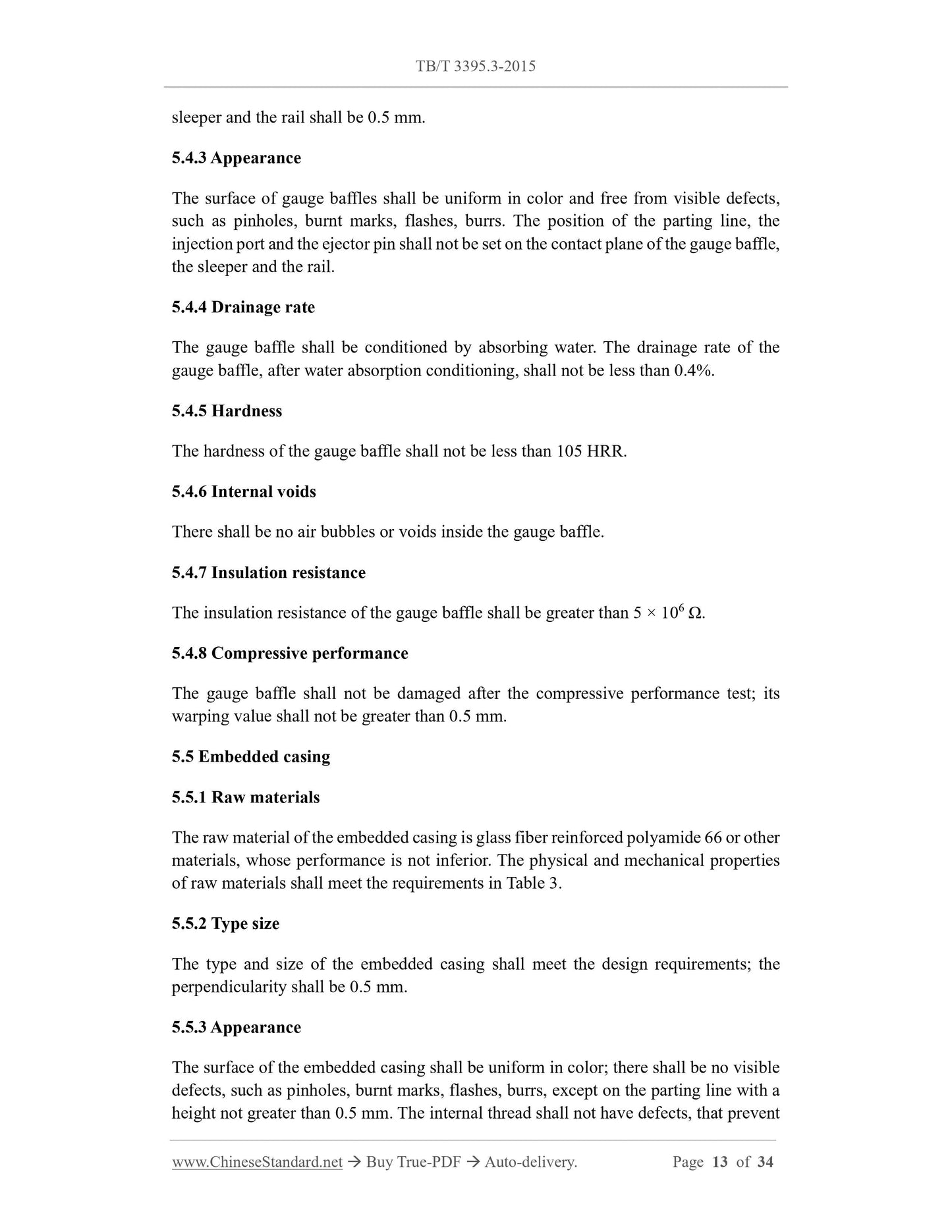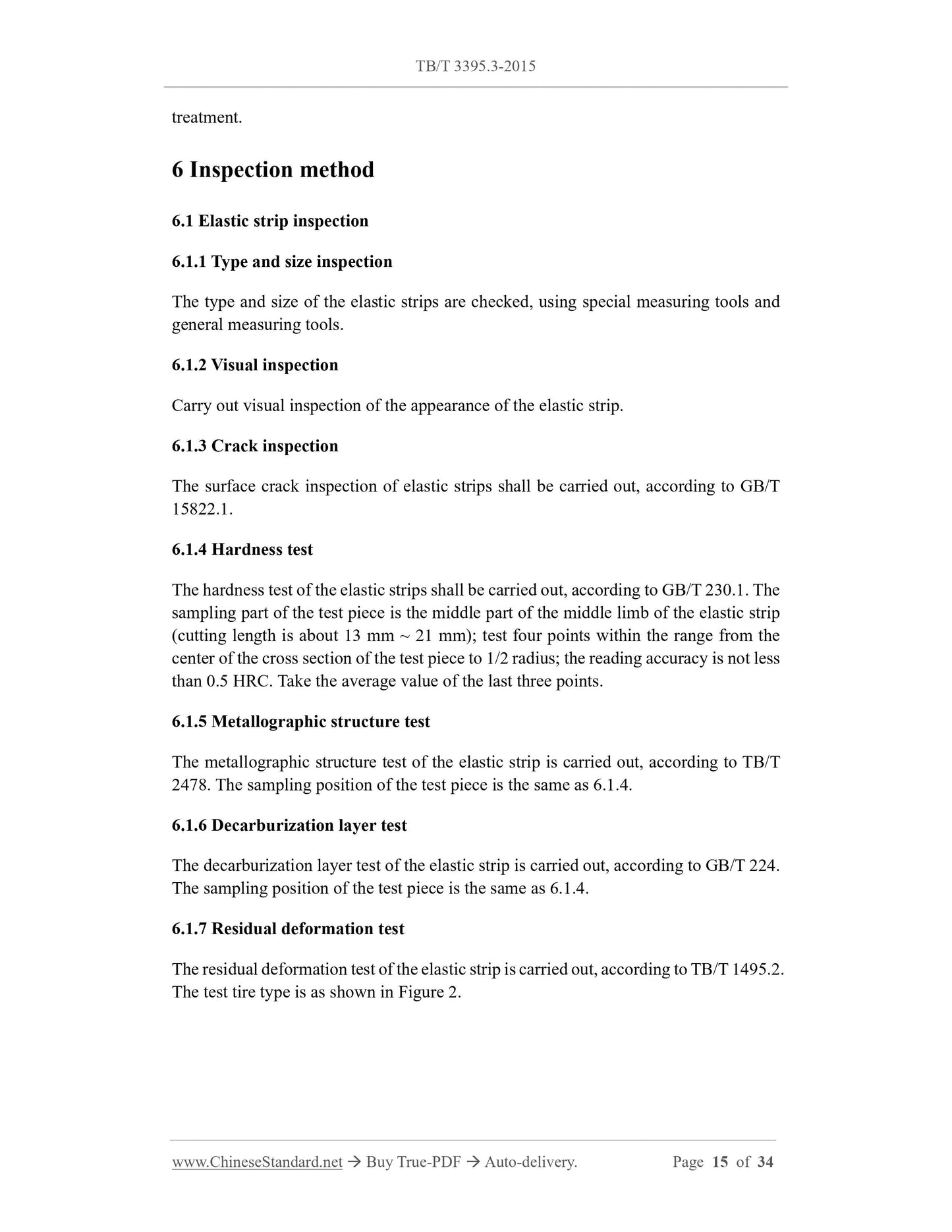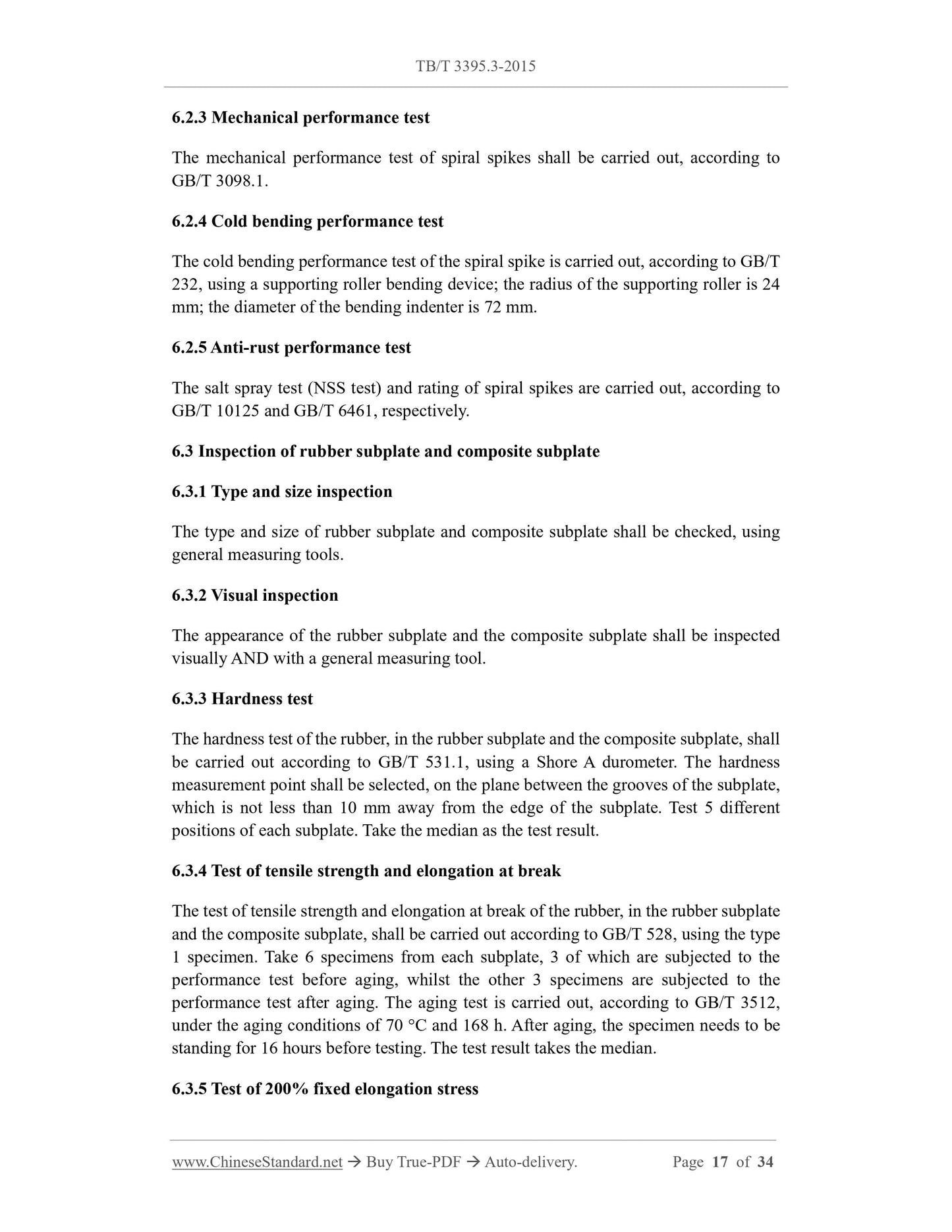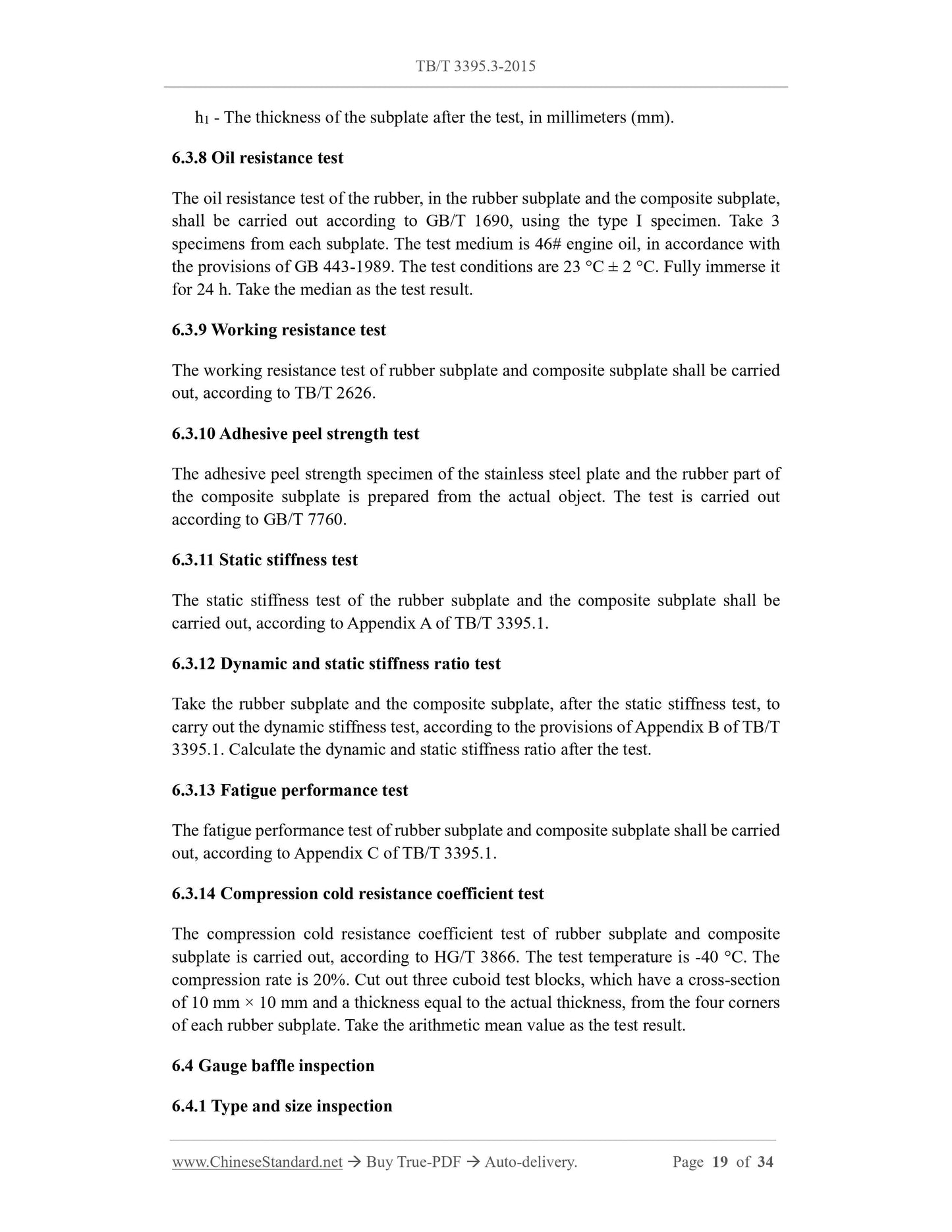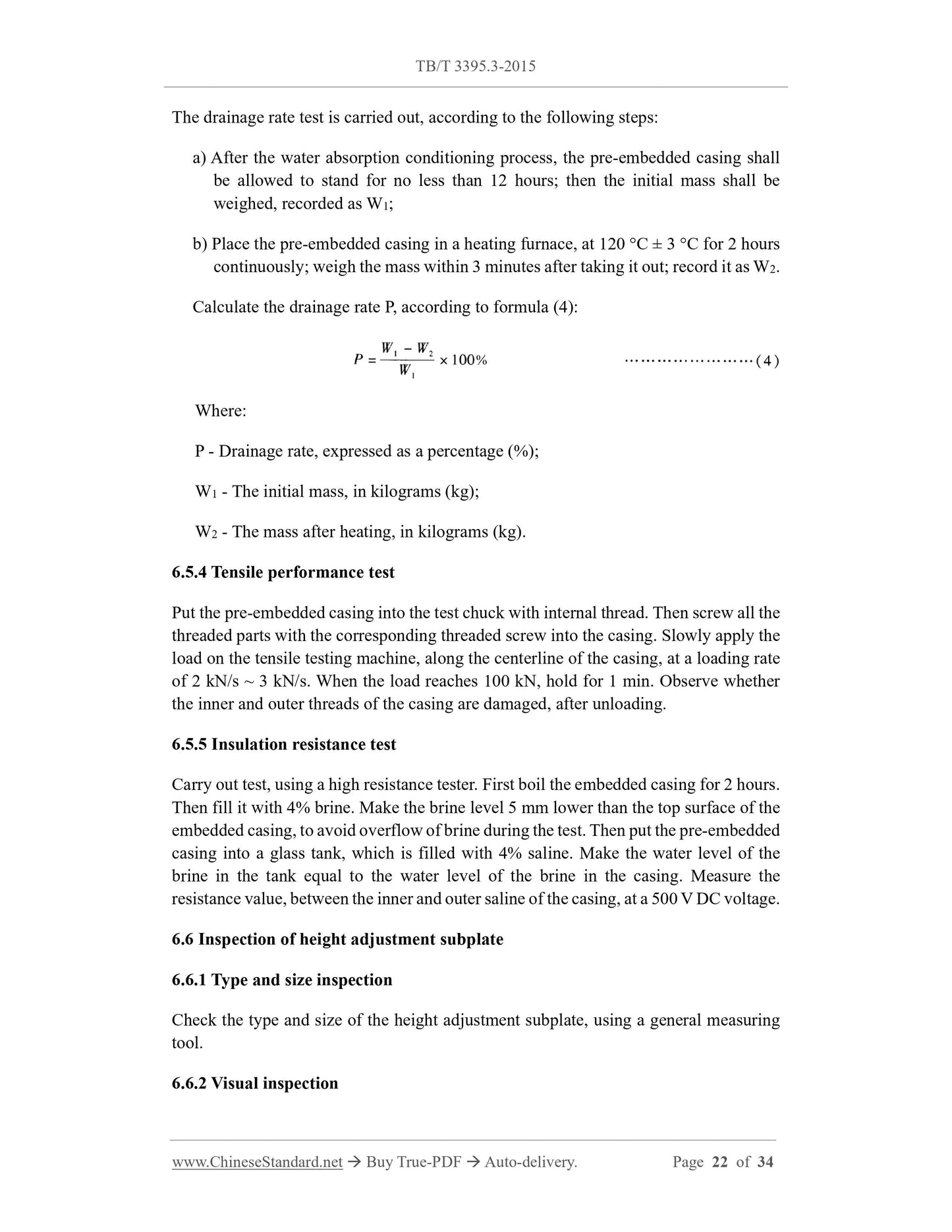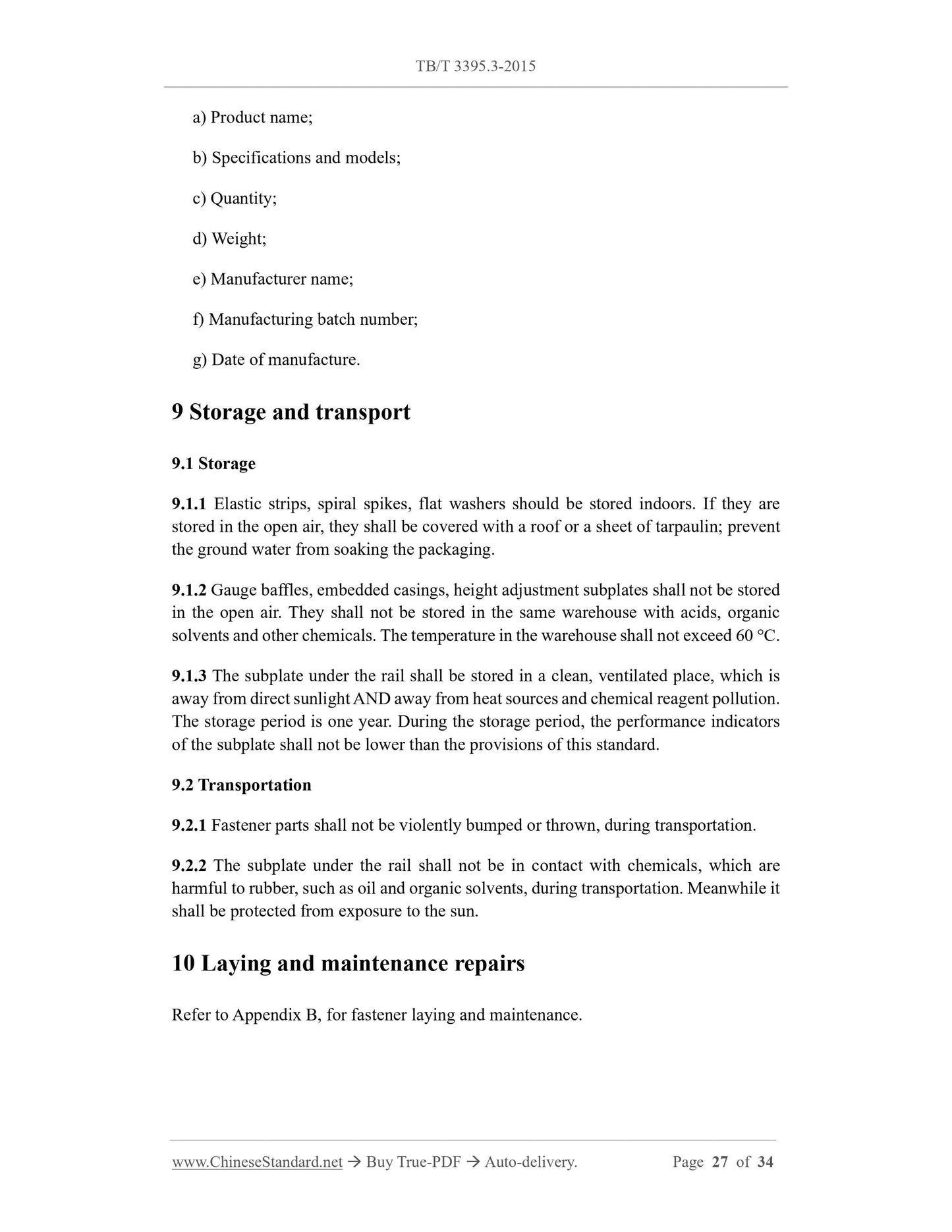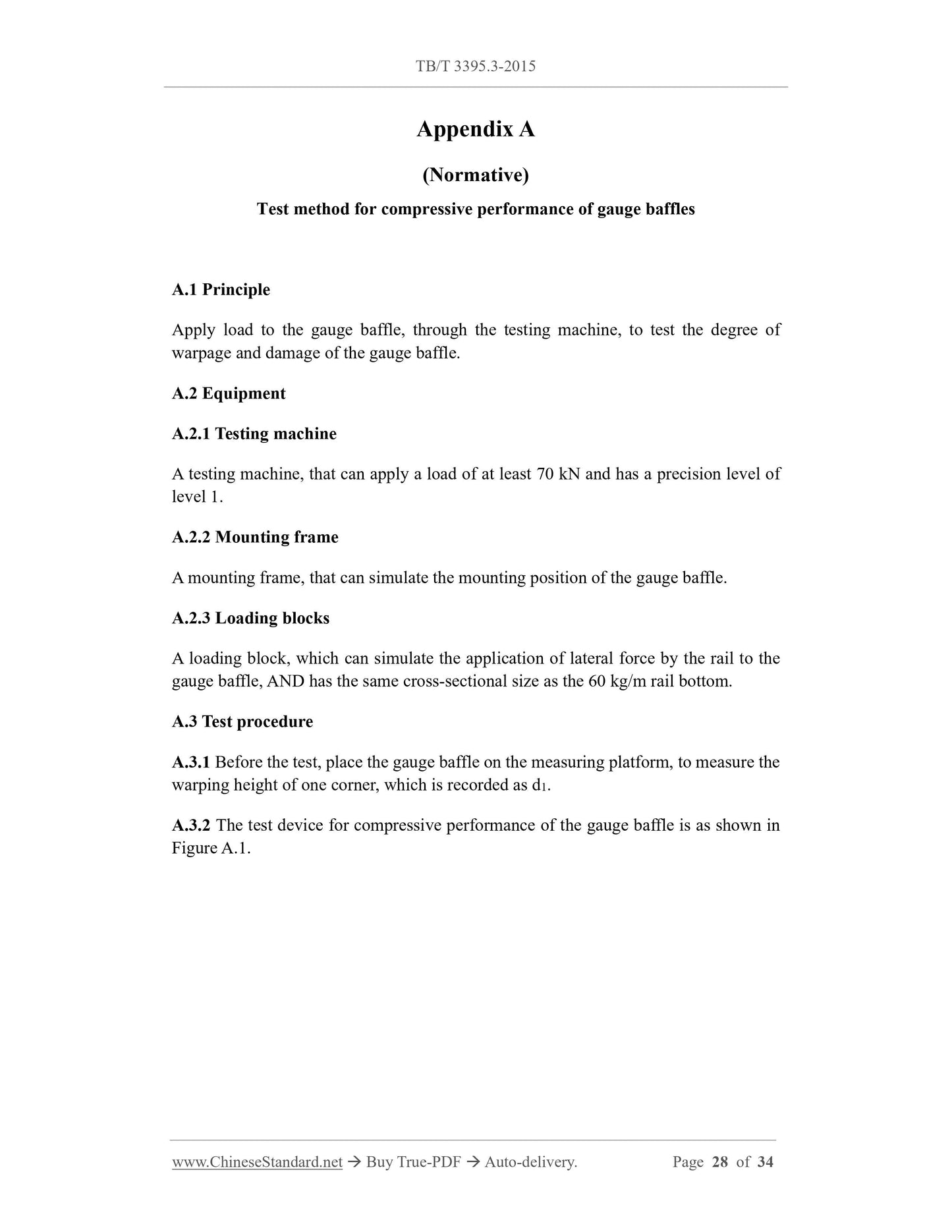1
/
of
12
www.ChineseStandard.us -- Field Test Asia Pte. Ltd.
TB/T 3395.3-2015 English PDF (TB/T3395.3-2015)
TB/T 3395.3-2015 English PDF (TB/T3395.3-2015)
Regular price
$410.00
Regular price
Sale price
$410.00
Unit price
/
per
Shipping calculated at checkout.
Couldn't load pickup availability
TB/T 3395.3-2015: Fastening systems for high-speed railway - Part 3: Type V fastening system
Delivery: 9 seconds. Download (and Email) true-PDF + Invoice.Get Quotation: Click TB/T 3395.3-2015 (Self-service in 1-minute)
Newer / historical versions: TB/T 3395.3-2015
Preview True-PDF
Scope
This Part specifies the fastener composition, assembly performance, technicalrequirements of parts, inspection methods, inspection rules, marking and packaging,
storage and transportation of type V fastening system.
This Part is applicable to type V fastening system for high-speed railway with ballasted
tracks.
Basic Data
| Standard ID | TB/T 3395.3-2015 (TB/T3395.3-2015) |
| Description (Translated English) | Fastening systems for high-speed railway - Part 3: Type V fastening system |
| Sector / Industry | Railway and Train Industry Standard (Recommended) |
| Classification of Chinese Standard | S11 |
| Classification of International Standard | 45.08 |
| Word Count Estimation | 24,258 |
| Date of Issue | 2015-07-15 |
| Date of Implementation | 2016-02-01 |
| Regulation (derived from) | State Railway-Science-Regulation (2015) No.29 |
| Issuing agency(ies) | National Railway Administration |
Share
